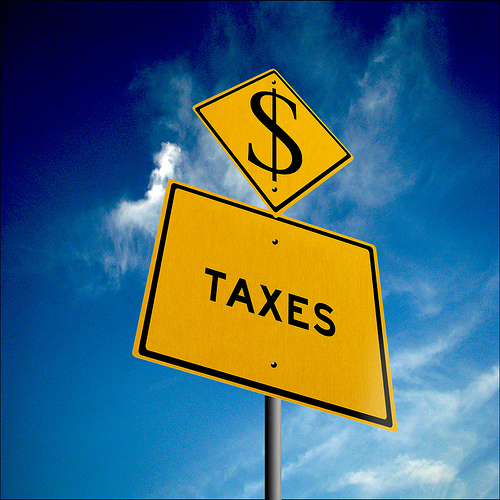Efiling your taxes has become increasingly popular in recent years. The majority of taxpayers now file their tax returns electronically, and it’s no wonder why. Filing electronically is quick, easy, and processed faster than mailing your return. Plus, the IRS recommends Efiling as the best way to file your taxes. Here’s a breakdown of the benefits of Efiling your taxes
In today’s digital world, electronic tax filing is expected to be an alternative to older, manual processes. Businesses can now do more than paper-based, laborious, time-consuming tax preparation or software-based filing with PriorTax. Online tax filing via Efile has brought greater flexibility in filing taxes and is much more convenient as one taxes can now be filed at one’s convenience, home or work.
PriorTax Assigned Tax Service Professionals
You do not need to use expensive tax-prep software to file taxes electronically. Even if you are not fiscally competent and not in a straightforward situation, you can fill out tax forms with one of our assigned tax professionals step by step on the spot. Online tax filing with PriorTax will identify tax forms and documents you will need to start the filing process with confidence.
Audit Protection with PriorTax
PriorTax can even provide an audit defense during the filing process should your tax return be selected for audit by the IRS.
Benefit 1. Filing Taxes Online or Efile tax is simply the easiest way
Taxes don’t have to be a pain. In the past, you had to make an appointment with your accounting office and wait around while they did the math. But now, you can file online from anywhere. All you need is an internet connection. You can even do it from your phone! With web-based tax programs, there’s no need to go to a physical office. And with locally downloaded programs, you can take your taxes with you wherever you go.
Filing your taxes online is quick, easy, and convenient. With step-by-step instructions, you can be confident that you’re completing everything correctly and won’t face any penalties for inaccuracy. You can even start filing, save your progress, and come back to it later. Online filing is simply more convenient.
Benefit 2. Efiling your tax gets your Tax Return through Direct Deposit
Choosing to file electronically and get your tax refund through direct deposit is the fastest way to get the money as soon as the IRS begins processing returns. Because Efiling reduces processing time, individuals and businesses receive their refunds faster (e.g., within three weeks of Efiling). In addition, you are more likely to get a refund more quickly if you file your return electronically instead of by mail, simply because doing so saves a trip to the post office and time spent in the mail.
Benefit 3. Efile taxes for faster processing
There are many advantages to filing your taxes electronically. One of the biggest advantages is that you will receive confirmation almost immediately that IRS has received your tax return. Additionally, processing your refund will likely be faster since electronic filing means that IRS does not need to sort or transcribe your tax return at their service center. Everything related to your tax return will be processed faster when you file online. You won’t have to read confusing instructions for each form or try to figure out which number goes in which box. Instead, electronic filing asks simple and intuitive questions, clarifies where inputting information is required, and automatically fills out all necessary forms.
There’s no need to write your name a million times when you file with an electronically signed return. Instead, simply draw your signature on your device’s trackpad, copy and paste it when indicated, and submit your return. The information is sent directly to the IRS immediately, eliminating the wait for postal delivery, IRS mail room sorting, and eventual approval.
Efiling your taxes means receiving any refunds you are owed much faster. Direct deposit is automatically wired to your bank account once the IRS processes your information, rather than waiting for a physical check to come in the mail. This way, you don’t have to rely on the postal service for timely delivery. It usually takes 1-3 weeks to get your refund after you file your taxes electronically and request a direct deposit. But it can vary based on how you filed, what credits you claimed, and how you want to receive your refund. You can learn more about when to expect your refund here.
Benefit 4. Simple and secure electronic records of tax forms
Keeping records of your taxes for up to seven years is a best practice. After that, there is a risk of identity theft when old tax records are disposed of improperly. On the other hand, the stack of past taxes will grow larger each year and take up more space. Efile taxes provides a solution by storing years of history securely online without taking up physical space. This makes information easy to retrieve when needed.
Benefit 5. Accuracy of filing taxes online
Taxes can be confusing, but accuracy is key. Incomplete or incorrect information given to the IRS can result in big penalties – even jail time. PriorTax takes care of everything for you so you can feel confident that your taxes are done right.
Efile your taxes early.
Someone who files early on their taxes will be already in the system, either processing their return or receiving a refund. If you discover that you owe the IRS money, filing early gives you extra time to get back on the road to paying the tax.
People who file early stand a better chance of discovering errors and fixing them before the deadline, which could result in larger tax refunds. People who tend to wait until later to file taxes are more likely to make mistakes, like missing out on valuable credits and deductions.
If you filed in mid-January, you would only owe taxes due after filing. The good news is that if you submit your taxes early but then you make an error, you will have extra time to fix it and still be on track for your required filing deadline. For these reasons, if you are not in a state of mind where you can file your taxes properly early, opting for the Tax Extension is a good idea that will buy you some additional time.












